Rating MLB general managers: The AL Central

When considering each general manager in the AL Central, their 2021 performance precisely mirrored the division standings. Rick Hahn, leader of the division champion Chicago White, turned in the best job of gathering talent and dumping non-talent, while Thad Levine of the last place Minnesota Twins had the worst.
Our standard for evaluating the performance of a general manager (or other chief executive who holds a functionally similar title) is simple. We attach a value to every personnel move made since the conclusion of the 2020 season last October. The sum of the values is the GM’s rating.
The value is determined by the Wins Above Average (WAA) generated by the player during 2021. WAA is an offshoot of WAR, and it is ideal for this purpose because unlike WAR it is zero-based. That means if we say a GM impacted his team by +2.5 games in 2021, he cumulatively improved his team’s fortunes by that many games.
Conversely, a GM with a negative cumulative WAA can be said to have hurt his team’s pennant prospects by that amount.
Broadly speaking, an MLB general manager can impact his team in any of five ways: by the trades, purchase, and waiver claims he makes, by his free agent signings or extensions, by his farm system callups, by the players he trades away, and by the players he releases or loses to free agency.
Each general manager should, of course, be judged in the context of what they are attempting to accomplish. As an example, Cubs general manager Jed Hoyer conducted a mid-season tear-down of his roster that was virtually guaranteed to produce a negative rating for Hoyer by season’s end.
Hoyer would probably be OK with that; the moves were designed for future, not present impact.
In the end, the best way to understand the rating is this: It tells how much better or worse a GM made his team’s roster compared with what would have occurred had he (or in the case of the Miami Marlins, she) done nothing at all.
For that reason, the ratings do not necessarily correlate with the final MLB standings. Some GMs are starting from a better position than others.
With that as an explanation, here’s how the five AL Central general managers scored in 2021.
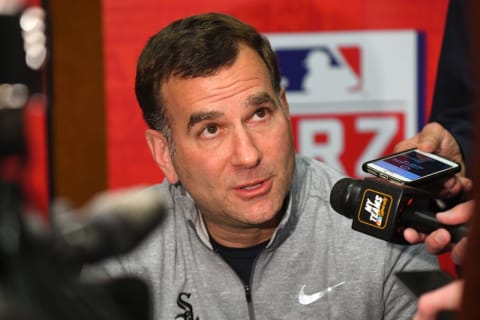
Rick Hahn, Chicago White Sox, senior vice president and general manager
+3.9 WAA
Hahn began 2021 with MLB’s best talent base. Players already under contract entering the season produced 18.9 games worth of WAA for the Sox, the highest foundational total of any of the 30 teams.
Hahn’s enhancement of that base merely ensured that the Sox would dominate the division, which they did, winning by 13 games.
Hahn treated that existing talent base with considered respect. He made a relatively modest 36 personnel moves affecting the major league roster, of which 42 percent produced a positive impact and 47 percent worked out negatively.
That doesn’t sound great, but consider the quality of Hahn’s most positive move. He acquired Lance Lynn from Texas and got a postseason Game 1 starter, a 2.69 ERA in 28 starts, and a 4.0 WAA.
Thanks largely to the Lynn deal, Hahn had the best trade season of any GM in 2021. The four players he brought in – Lynn, Craig Kimbrel, Ryan Tepera, and Cesar Hernandez – combined for +2.8 WAA, while the removal of four players to other teams increased Hahn’s overall trade impact to +3.4.
In other aspects, Hahn’s season was average. His free agent decisions did improve the Sox by +2.1 games, but that was primarily due to his orphaning of seven players, none of whom produced positive value for their new teams. The Sox farm system produced Michael Kopech (+1.0 WAA), but it also produced Zack Collins (-1.3 WAA). The overall impact of the rookie crop was -1.6.
Still, Hahn’s ability to land Lynn elevated the overall judgment of his work, making it the division’s best.
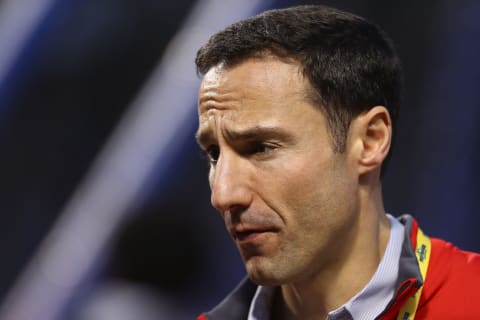
Michael Chernoff, Cleveland Indians general manager
-0.4
Chernoff took a lot of guff for the preseason ‘give up’ trade of Francisco Lindor to New York. The trade certainly was a short-term loss to the Indians, who got the less expensive and less talented Andres Gimenez and Amed Rosario in return.
Chernoff made 39 personnel moves this season, of which 17 (44 percent) created positive value and 49 percent – the three parts of the Lindor trade among them – impacted the team negatively.
Chernoff’s recurring problem was that none of his arrivals involved a significant positive short term impact. The best was the July trade that brought Myles Straw over from Houston in exchange for filler reliever Phil Maton and a minor leaguer.
Straw, who could develop into a positive asset, batted .285 with a .739 OPS in his 60 games, amounting to +1.0 WAA.
Overall, though, Chernoff did not have a good season at the trade mart. He obtained seven players in exchange for nine players, the cumulative impact on the Indians of those moves amounting to just +0.8 games.
The Indians’ farm system did not deliver. Chernoff called on nine first-year players, seven of whom produced negative value. The sum total of the nine players was -5.7 WAA.
The overall -0.4 short term WAA combined with the +0.2 WAA produced by players previously under contract clearly labels the 2021 Indians as an average MLB team, which at 80-82 happens to be precisely what they were.
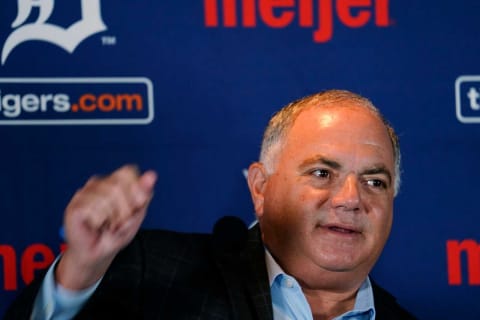
Al Avila, Detroit Tigers general manager
-4.7 WAA
Presumably believing he had a youthful talent base that would benefit from a year of growth, Avila did relatively little in 2021 to disrupt the growth pattern. That absence of hyperactivity appeared to pay dividends when the Tigers significantly improved both their raw win total and percentage, and came home in third place.
Avila made only 25 personnel moves impacting the MLB roster, 10 of them producing positive value and 13 producing negative value.
The only move of substantial positive value, one unlikely to have long term impact, was the signing of journeyman reliever Wily Peralta. The 32-year-old appeared in 42 games with a 3.07 ERA that translated to a +1.2 WAA.
Several of Avila’s efforts did not turn out as well. He signed free agent pitcher Jose Urena following Urena’s release in December by the Marlins. But Urena did in Detroit what he had done in Miami: fail to live up to expectations. He was 4-8 in 18 starts with a 5.81 ERA and a -1.4 WAA.
Matt Manning was the star of the rookie class. But his 4-7 record and 5.80 ERA in 18 starts generated a -1.1 WAA, less than an auspicious beginning to a career.
Avila did not invest heavily in the free agent market, and when he did those moves did not work out. He infused a dozen hands into the Tigers roster, and rid the club of three others. But the net impact of those 15 moves was -3.5 games.
Avila’s decision to release C.J. Cron looked bad when Cron signed with Arizona and batted .281 with 28 home runs and 92 RBIs, a +1.5 WAA for the D-Backs.
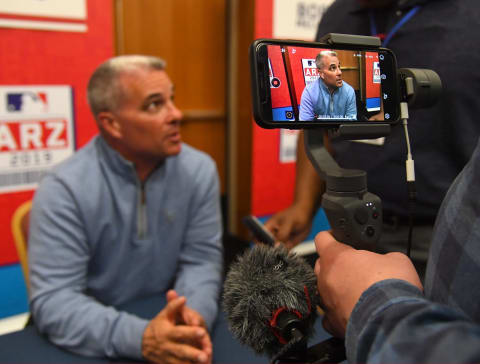
Dayton Moore, Kansas City Royals senior vice president and general manager
-6.8
Moore accepted a promotion to president of the Royals at season’s end, naming J.J. Piccolo as his successor.
Moore attempted to grease the results of what would become his final season as GM with an aggressive approach to free agency. It failed pretty miserably. He signed or extended nine players, and they thanked him by producing -8.7 games of WAA to the Royals’ season-long fate.
Moore’s biggest mistake, at least in the short-term, turned out to be giving Hunter Dozier a five year, $34 million extension. Dozier responded with an execrable season: a .154 average and .680 OPS in 144 games. Dozier’s -4.5 WAA may have been baseball’s worst.
That wasn’t all. Moore signed first baseman Carlos Santana to a one-year, $10.5 million deal and got a .214 average, a .660 OPS, and -2.3 WAA for his effort. Wade Davis, a key piece of the team’s 2015 World Series win, reprised his bullpen role with much less success: an 0-3 record and 6.75 ERA in 40 appearances, translating to -1.1 WAA.
Overall, Moore made 31 moves affecting the MLB roster, only 11 of which returned positive short-term results.
At the trade window, Moore was more successful. His acquisition of Andrew Benintendi (+0.7 WAA) cost Franchy Cordero (-1.1 for Boston) and Khalil Lee (-0.4 for the Mets), explaining most of the net +2.4 improvement Moore created via that aspect of his job.
A dozen newly minted farmhands were less useful. They combined for -2.5 WAA, most of that attributable to Jackson Kowar’s unsatisfying debut. Kowar had an 11.27 ERA in 30 innings, good for a -1.8 WAA.
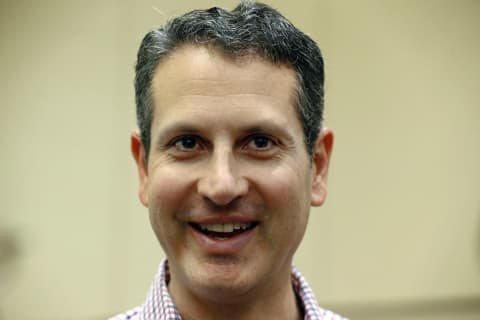
Thad Levine, Minnesota Twins senior vice president and general manager
-16.4
The Twins were probably MLB’s biggest disappointment. The two-time defending division champions discovered fifth place by mid April and never got it together.
A substantial portion of that flop was the fault of Levine, who had the worst performance of any GM in 2021. His trade maneuverings cost Minnesota 2.9 games in the standings, his free agent activity cost an additional 6.5 games, and his farm system promotions subtracted a final 7.0 games.
Levine made 52 personnel moves in an effort to resuscitate the Twins, but for the most part, those only dug the hole deeper. A distressing 32 of those moves – 62 percent – brought negative results.
The most positively impactful player drawn by Levine to the Twins’ orbit in 2021 was Juan Minaya, a reliever with four years’ experience on Chicago’s South Side. Minaya’s net value was +0.8 WAA.
The problem was Minaya represented Levine’s best MLB work. In contrast, five of his pitching moves produced impacts of -1.0 WAA or worse, among them J.A. Happ (-2.6), Matt Shoemaker (-2.3), Griffin Jax (-1.9), Randy Dobnak (-1.8), and Alex Colome (-1.0). Happ and Shoemaker were so bad that the former was traded away and the latter released at midseason.
Ranking the NL East GM's. dark. Next
Levine’s disastrous 2021 represented a turnaround for him. In 2019 and 2020, his work yielded positive short term results averaging +6.9 WAA per season.